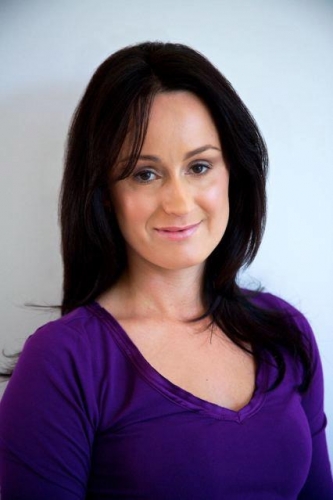Children with anxiety are complicated, growing, constantly changing human beings. They're also prone to exhibiting 'imposter' behaviours that mask feelings of anxiety.
It's often referred to as the iceberg effect, where what looks like one emotion disguises another. And just as icebergs are deceptive, because what you see on the surface is just a small glimpse of what lies beneath, the same can be true of young people's emotions and behaviours.
Subscribe for FREE to the HealthTimes magazine
Observing the behaviour of an anxious child can be similar to seeing the tip of an iceberg. Far beneath this surface-level emotion or behaviour are layers of emotions and experiences. According to experts, a child might demonstrate anxiety in many unexpected ways, so it's important to pay attention and dig a little deeper.
We spoke to three mental health professionals on the hidden signs (imposters) of anxiety in young people and how to offer support or seek further help if required. So, what can signal anxiety?
1. Anger/aggressionFEATURED JOBS
St Vincent's Private Hospital
Clinical Psychologist Vanessa Cobham, lead author of
Fear-Less Triple P, says anxiety can present in many different and unexpected ways, with anger and social withdrawal common.
"We tend to expect to see increased fearfulness and teariness in children, perhaps clingy behaviour, that kind of thing. But while that's a typical presentation, anxiety can look like angry, aggressive behaviour.
"Behaviour that looks aggressive and oppositional – as though driven by anger – is very commonly being driven by anxiety.
"In this situation, adults around the child or adolescent may label it that way [angry] when the behaviour is driven by anxiety.
"Getting adults to stop and reflect on what might be going on for the child who they're in the habit of thinking of as 'aggressive and oppositional' can be a useful exercise."
2. Social withdrawal
As well as angry, aggressive and oppositional behaviour, anxiety might present as social withdrawal, explains Cobham.
"Anxiety can also look like social withdrawal – really pulling back from interactions with family members and talking and socialising with friends – that sort of thing."
3. Over planning
Deb Hopper, occupational therapist and author of Teaching Kids to Manage Anxiety – Superstar Practical Strategies, says when anxious, the brain moves into the fight, flight, or freeze response.
"To feel safe, our brain responds well to the situation being predictable. So, when kids don't know what's next – such as the start of school holidays – having a family calendar on a whiteboard is helpful.
"It shows what's coming up and introduces predictability so that our brain stem is calm, and we can reduce anxiety levels," says Hopper.
4. Defiance
Defiance and oppositional behaviour are protective strategies that help children feel more in control when they're worried or anxious, explains Hopper.
"Basically, when kids feel anxiety, they feel out of control, and by controlling the situation, they take control by adding their own challenge to the task and making it more predictable for themselves.
"This level of control over the situation means they can control the level of challenge and can achieve it."
5. Chandeliering
A term coined by social researcher Brene Brown, chandeliering is another unexpected sign of anxiety, says Hopper.
"When anxious, emotions push kids into flight, fright, freeze … the flight and fright is the active reaction, which can be seen as 'flying off the handle.'
"It's a natural reaction when our brainstem is overwhelmed, we feel we can't cope, and for children, emotions may come out of nowhere into a volcano of overload or anger, tears, yelling, swearing and physical reactions, such as hitting or biting."
Supporting kids with imposter anxiety symptoms
So, how can we support and advocate for children and teens with anxiety presenting as anger, social withdrawal, overplanning, defiance or chandeliering?
That can be quite challenging, says Cobham, but as the community and professionals in healthcare and education become more knowledgeable about anxiety's range of presentations, it will get easier.
"It may help to refer people to some of the material on the
Triple P parent website to open their mind to different ways anxiety can present. Behaviour that looks aggressive and oppositional – as though it is driven by anger – is very commonly driven by anxiety.
"Getting the adults around children to stop and reflect on what might be going on for the children they are in the habit of thinking of as 'aggressive, defiant or oppositional' can be a really useful exercise," says Cobham.
Candise Adams,
clinical counsellor and psychotherapist, says when these unexpected signs of anxiety start to impact a child's day repetitively, it should be brought to caregivers' attention.
"It may be seen as 'bad behaviour, hormonal or a phase' that parents haven't recognised as an anxiety disorder. Early intervention is always more beneficial for the child."
The next step should be seeking the support of a counsellor to get to the root cause of the behaviour, explains Adams.
"Find a counsellor that your child connects with…children need a safe place to explore their emotions and process their feelings. It will also give them skills while they're young that will benefit them for the rest of their lives."













